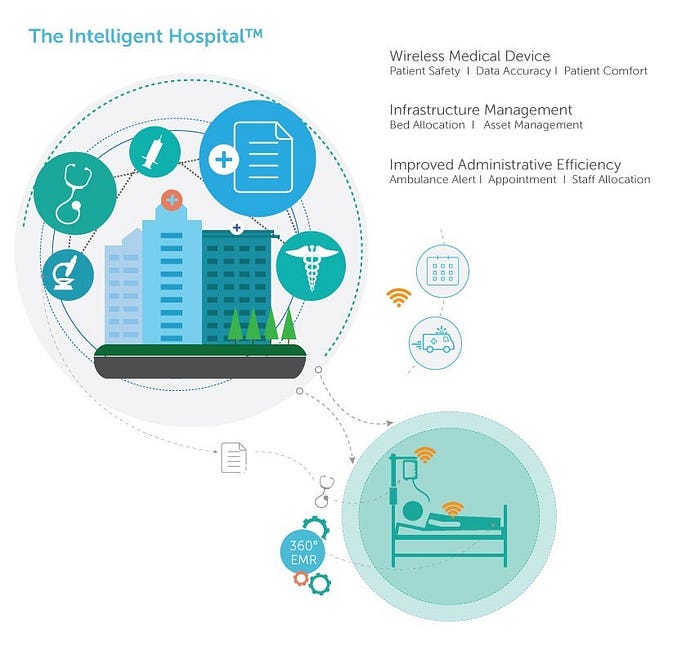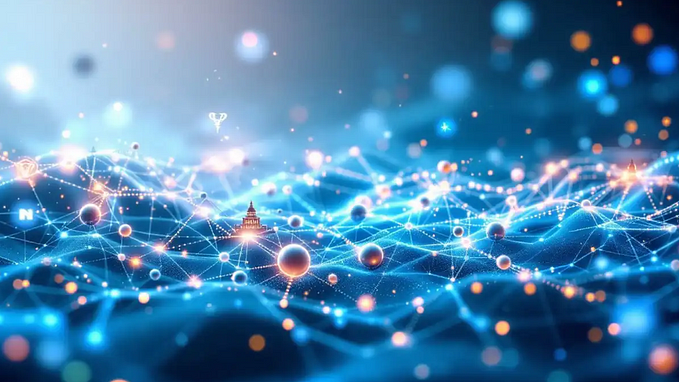Digital Transformation of Healthcare: IoMT Connectivity, AI, and Value Streams

The Digital Transformation (DX) of Healthcare is imminent. A number of key advances in technology as well as digital transformation best practices are paving the way for a watershed year in Healthcare. In addition to the staggering and continuously rising cost of Healthcare, silos within Healthcare value streams as well errors in diagnostics and inconsistencies in patient data are some of the pervasive challenges in the healthcare industry. Consider this. Medical errors are the third leading cause of death in the United States!
These formidable challenges of Healthcare impact our pocketbooks and wellness. However, the Digital Transformation of Healthcare is also becoming a reality with tremendous benefits to patients, providers, and payers. More specifically, three complimentary technologies are now the pillars for Healthcare DX:

1.Internet of Things Connected Wellness and Medical Devices: This year also at CES 2018 there were 200 Digital Health technologies focusing on Wellness and Medical Devices with concrete benefits for the consumer. In addition medical devices are becoming increasingly intelligent, connected, and robust for delivering optimized healthcare services. There is even an acronym for it: Internet of Medical Things (IoMT) that aggregates connectivity of medical devices with Information Technology (IT).

2. Artificial Intelligence in Healthcare: AI for discovering patterns from connected healthcare monitoring devices as well as patient transactions are providing tremendous opportunities for preventive care. There are many different types of AI preventive care models. In addition to aggregating and mining models from patient data another benefit of AI in healthcare is to opt for a system of continuous learning within the system itself. Furthermore, the knowledge harvested from various medical sources including patients, connected devices, and medical staff such as doctors and nurses, can be digitized and automated. The combination or even “champion challenge” between care options mined and discovered from patient data vs. the knowledge of experts (e.g. doctors and nurses) provides increased opportunities in optimizing the patient care.

3. Digitization of Healthcare Value Streams: Wellness monitoring and connectivity on the patient (outpatient or in the care facility — such as the hospital) are good and important building blocks. However, to solve these pervasive challenges, the end-to-end values stream for the patient has to be captured and digitized. Value Stream efficiency and optimizations in Healthcare are increasingly leveraging intelligent Business Process Management and Dynamic Case Management. For repetitive work, Healthcare is also leveraging Robotic Automation. All categories of Healthcare work are being either automated or augmented and assisted through AI. Categories of Healthcare work include repetitive work (e.g. entering patient data), knowledge or cognitive work (doctors, nurses), and AI assisted work for all categories of medical workers.
The applications as well as the implication of IoMT, AI, and value stream automation for healthcare are tremendous. Here are some examples of Healthcare applications with tremendous benefits to the patients as well as Healthcare providers and payers:

Wellness Tracking — for better health and fitness: there are now a plethora of low energy sensor devices, such as Fitbit, smart watches and more recently wearables that can monitor heartbeat, temperature, and blood pressure. The data from these devices could be aggregated over time, combined with the knowledge of the best fitness coaches to provide personalized coaching. Employers are also providing gamification incentives through corporate wellness programs for to their employees, leveraging connected wearables. There are many practical benefits for this, including healthier employees and lower insurance costs.

Seniors Home Healthcare — demographically the baby boomers are about to retire and will constitute a large percent of the population. These seniors typically prefer to be in their homes than in rehab centers or worse hospitals. Connected monitoring and connected devices, including telecare, are providing tremendous opportunities for remote senior healthcare. The connectivity solutions include pill reminders, connected tests, such as for glucose management, and intelligent motion detectors (e.g. for fall detection, irregular movement, or no movement).

Intelligent Hospitals: The aforementioned examples (and there are so many others) pertain primarily to the connected patient and the various services serving them. Now, as in many other “intelligent” infrastructure domain, we are also witnessing the emergence of Intelligent Hospitals. As illustrated here, IoT connectivity has many pragmatic and valuable applications for the overall operation of hospitals. Medical devices can be connected — for precision and speed improving the patient experience; the hospital intelligent infrastructure as a building could be improved; and overall administrative efficiency could be optimized.

Digital Prescriptive Maintenance of Medical Equipment: As discussed in a previous post, Digital Prescriptive Maintenance (DPM) is the killer application for IoT/IIoT (no pun intended J). Wellness equipment for patients, the elderly monitoring equipment as well as increasingly complex connected medical devices in hospitals can all benefit for DPM. Here the “patient” is the connected device. These devices are generating enormous amount of data (Big Data is becoming Thing Data) — not only about the patient but also operational data of the equipment itself: for its maintenance and optimal operation. Here also there is a value stream of pridictively detecting potential problems with the medical equipment, triaging the solution (e.g. update onboard software or get needed part and send field technician), and fixing it: preferably before it breaks.

End-To-End Digitization of Value Streams Making the Difference: Wellness monitoring and connectivity on the patient (outpatient or in the care facility — such as the hospital) are good and important building blocks. However, to solve these pervasive challenges, the end-to-end values stream for the patient has to be captured and digitized. With an intelligent Digital Transformation platform, we can now realize end-to-end value streams connecting the patient, with her/his data, the healthcare providers, emergency services, and healthcare payers. This ultimate Healthcare DX needs task orchestration and monitoring through automated digitized processes that monitor, control, and optimize the resolution of preventive as well as emergency care situations. The end-to-end value stream connects the patient, his/her data, to primary, secondary, healthcare facility and emergency services. This needs an automated process (workflow) engine to assign tasks and monitor the resolution of a potential emergency care situation.
Therefore the most significant value impact of IoMT and AI in Healthcare is achieved through the digitization and automation of value streams. The “intelligence” in these automated value streams emanates from mining the patient and Healthcare activity data. In fact with a Digital Transformation (DX) platform, you can combine the experience of the medical knowledge workers (business rules) with the insight that is harvest from medical device data. The insight — from human knowledge or data analytics (AI) or need to be operationalized in action. The action is realized through automated tasks. The end-to-end digitized value stream could involve the patient, the devices, the primary and secondary care providers, and potentially the intelligent hospital with all the connectivity. Thus both information / patient data as well as process integration and connectivity is realized with connected patients, connected facilities, connected care providers, and connected vehicles.











